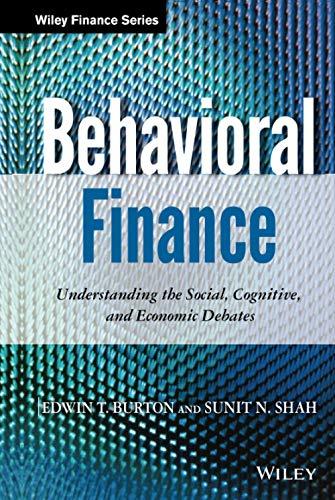Question
You have a $1,000 portfolio which is invested in stocks A and B plus a risk-free asset. $500 is invested in stock A. Stock A
You have a $1,000 portfolio which is invested in stocks A and B plus a risk-free asset. $500 is invested in stock A. Stock A has a beta of 1.3 and stock B has a beta of 0.6. How much needs to be invested in stock B if you want a portfolio beta of 0.9?
$______
| A share of stock sells for $42 today. The beta of the stock is 1.4, and the expected return on the market is 14 percent. The stock is expected to pay a dividend of $1.50 in one year. If the risk-free rate is 4.1 percent, what should the share price be in one year? (Round your answer to 2 decimal places. Omit the "$" sign in your response.) |
Price = $______
| Stock Y has a beta of 1.4 and an expected return of 15.65 percent. Stock Z has a beta of 0.6 and an expected return of 7 percent. What would the risk-free rate have to be for the two stocks to be correctly priced relative to each other? (Round your answer to 2 decimal places. Omit the "%" sign in your response.) Risk Free rate ______% |
Step by Step Solution
There are 3 Steps involved in it
Step: 1

Get Instant Access to Expert-Tailored Solutions
See step-by-step solutions with expert insights and AI powered tools for academic success
Step: 2

Step: 3

Ace Your Homework with AI
Get the answers you need in no time with our AI-driven, step-by-step assistance
Get Started


